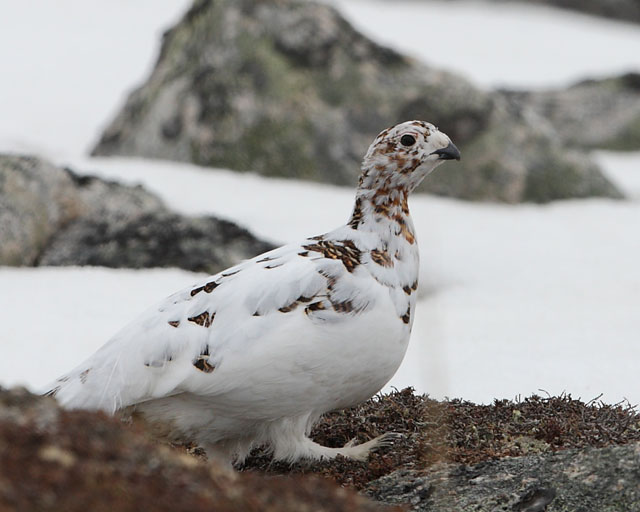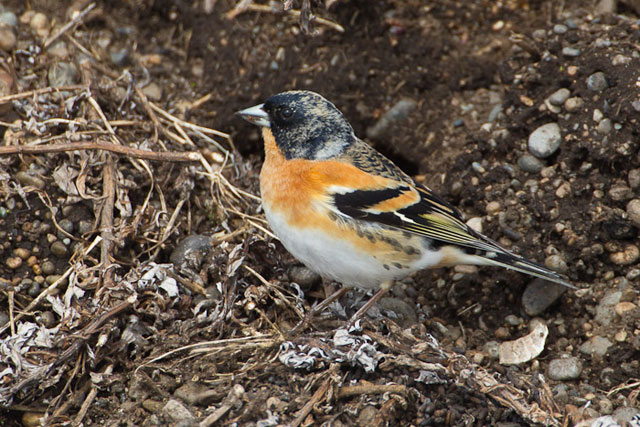From the Field
August 10: Rich Hoyer from his completed Oregon in Summer tour
What a grand tour through the grand state of Oregon we had this past late July. The variety of habitats and landscapes with picture perfect weather throughout made birding and natural history observation a rich experience. Starting with a pelagic trip off of Newport, we saw many Black-footed Albatrosses and a few other wonderful open-ocean species, including the gigantic Ocean Sunfish pictured below. In the moist, towering forests of Mary's Peak we scored with a pair of Sooty Grouse on the road (photo below), while at the end of the tour in the drier, flower-filled mountains of central Oregon (photo of a patch of Fireweed below) we came across two large, multiple-family groups of Dusky Grouse – surely the first tour in the US to net both of these former "Blue Grouse" forms. Red-breasted Sapsucker was another avian highlight (a lifer for almost everyone), as was the unbelievable spectacle of several 10's of thousands of birds on Lake Abert in the stark, wide-open landscapes of the Great Basin (photo below). There were possibly as many as 200,000 or more Wilson's Phalaropes on the lake, in addition to many thousands of Black-necked Stilts, American Avocets, and lots of other species. The other forms of wildlife on the tour were also a treat – with several species of dragonflies (photo of a Band-winged Meadowhawk below), many butterflies, and even a couple very nice snakes (photo of Western Rattlesnake crossing the road at Malheur NWR below).

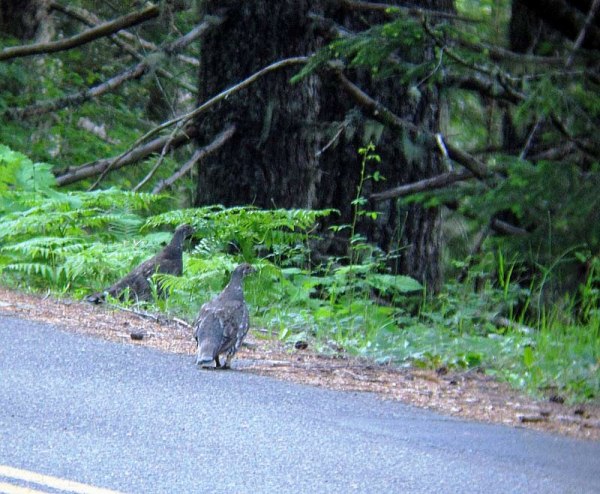

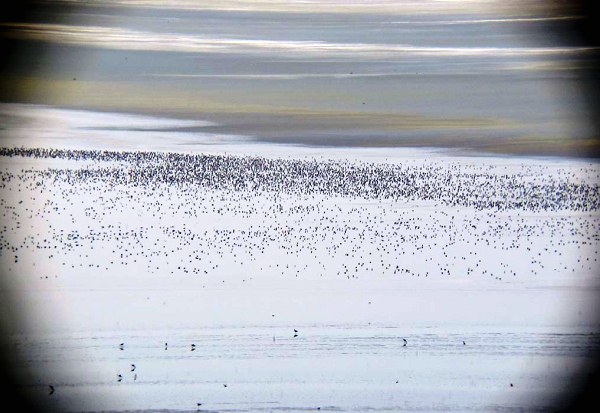
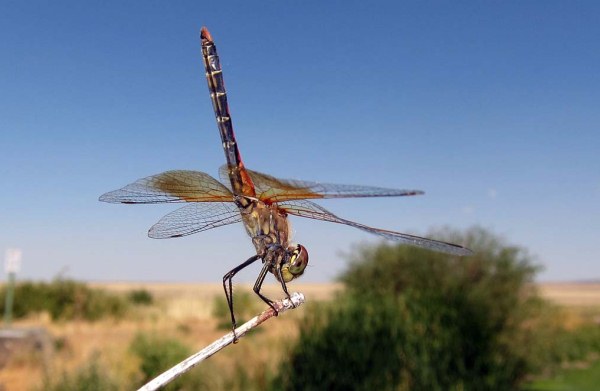

July 18: Steve Howell on the last days of his Ecuador: A Week in Paradise tour
When the young Dark-backed Wood-Quail pounced on the Giant Antpitta, as the otherworldly squawks of lekking cock-of-the-rocks reverberated through the forest, we knew we weren't in Kansas anymore... As well as Angel Paz's now-famous Giant Antpitta (below), we enjoyed great views of the spectacular Ocellated Tapaculo (below) and a procession of colorful birds at his feeders, from Crimson-mantled Toucanet to Velvet-purple Coronet (both below). After a restful afternoon at the lodge we ended the day with amazing views of spectacular Lyre-tailed Nightjars, their tails flowing like fern fronds in a gentle breeze. Our day trip to the adjacent lowlands showcased a very different avifauna, with birds ranging from Chestnut-mandibled Toucan to the bee-sized Black-capped Pygmy-Tyrant (below), and a host of new antbirds, flycatchers, and tanagers, including Yellow-tufted Dacnis (below). All too soon it was time to leave our home in paradise and head back to Quito, but not before more dazzling tanager flocks and some stunning Plate-billed Mountain-Toucans along the way.
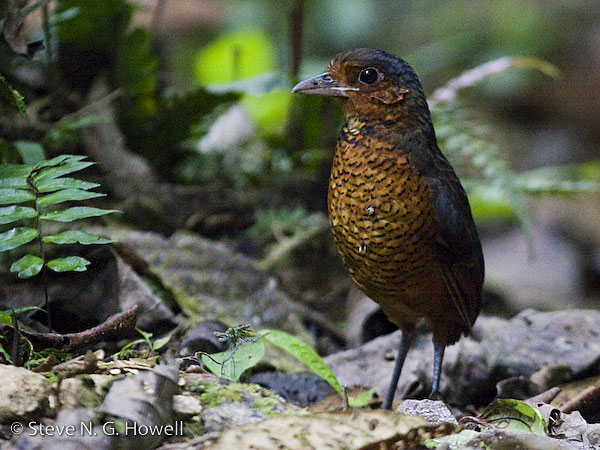
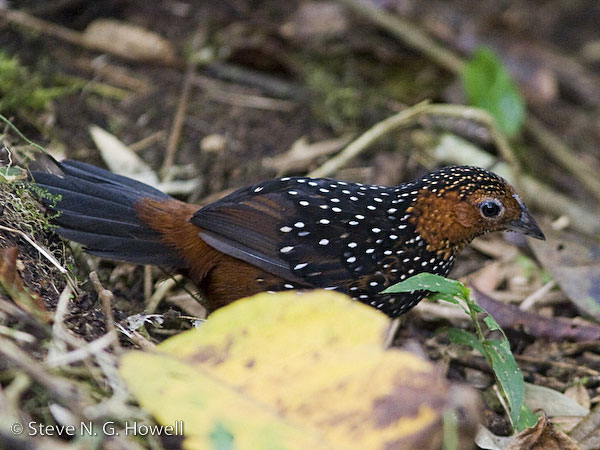
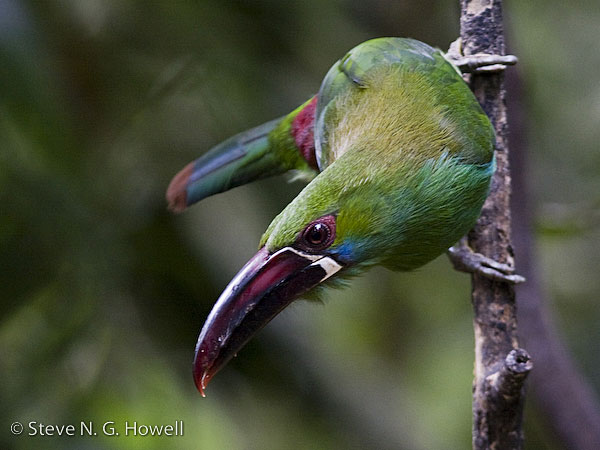

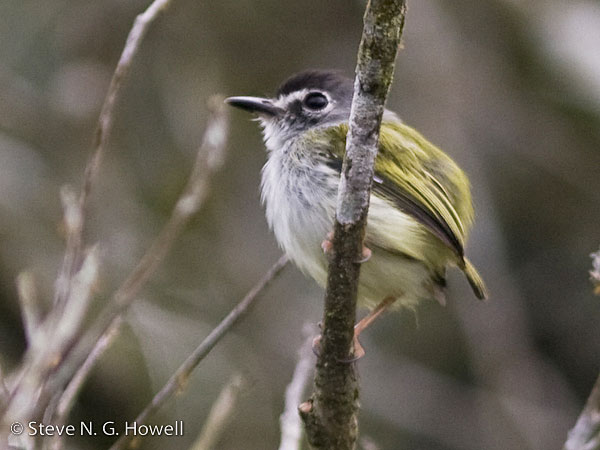
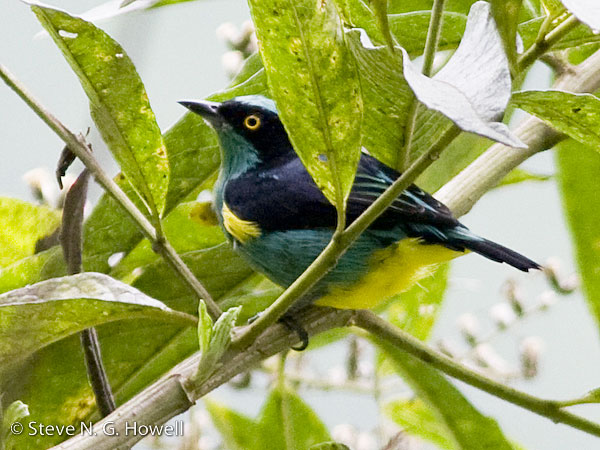
July 18: Gavin Bieber on his just-completed tour of western British Columbia
Our summer British Columbia tour enjoyed nearly perfect, in fact sometimes unseasonably warm weather throughout the week. In the peaks of the Cascade Ranges near Manning Provincial Park we found drumming American Three-toed Woodpeckers amid dense spruce forest, alpine meadows and snow-capped peaks. The dry Okanagan Valley held a interesting mix of species such as western birds such as Lewis's Woodpecker and Rock Wren, and even a cooperative Flammulated Owl in a nest box and on the beautiful rocky shores of Vancouver Island we studied the unique Heerman's Gull. In all we tallied 183 species of birds, and 20 species of mammals in a short but bird-rich week, all while enjoying some of the most attractive landscapes that North America has to offer. Who could ask for more?
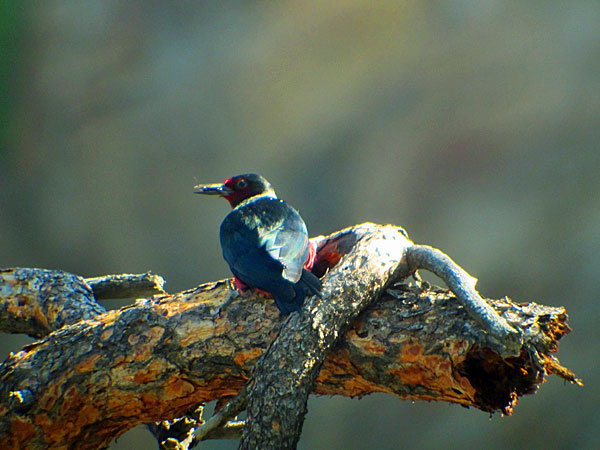
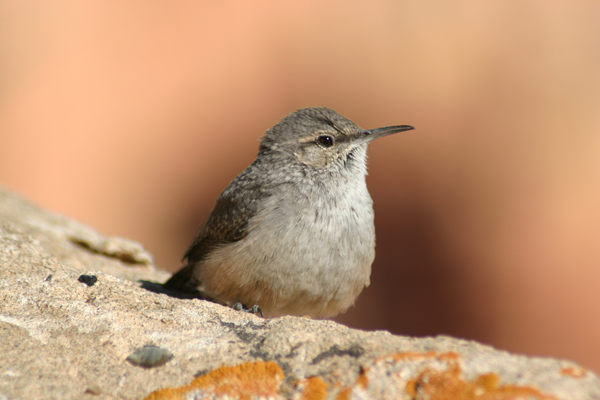
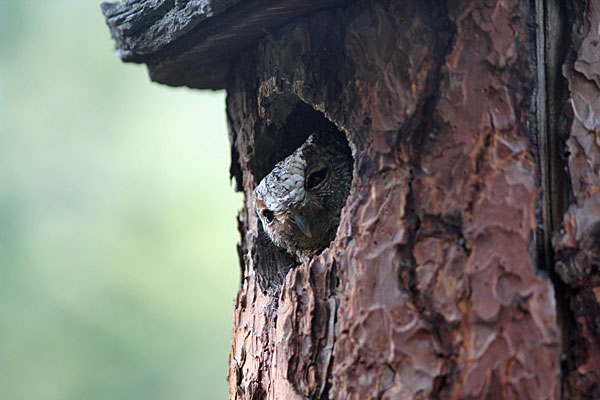

July 15: Yann Kolbeinsson on his just-completed Iceland tour
Another marvelous tour across fabulously scenic west and north Iceland has come to an end. Once again we managed to see all breeding birds that were searched for and this time the weather treated us in the best imaginable way with this summer being possibly one of the driest in Iceland in years. One of our group managed to stay in shorts throughout the whole trip, even on the whale-watching trip! We had great looks of most of the 81 species recorded on the trip, though being attacked by Great Skuas defending their young was the ultimate close-up! Our evening at Látrabjarg cliff, the westernmost point in Europe, was memorable in calm weather and clear skies. How can one top photographing Atlantic Puffins within arm‘s reach with the setting sun shortly before midnight? Meanwhile the thousands of alcids of all North Atlantic species except Dovekie circle and chatter on the cliff sides! This trip‘s whale-watching produced no less than seven Humpback Whales (close enough to feel the spout on our faces!) and a Minke Whale. Other highlights included several Gyr Falcons along the roadsides, Harlequin Ducks in their splendid breeding plumage, Black Guillemots feeding young, the omnipresent Red-necked Phalaropes, multiple Iceland Gulls, 16 species of ducks including two King Eiders and a raft of nearly 600 Manx Shearwaters on our last day... as well as a single Bar-tailed Godwit at the tour‘s last stop which had never been seen on our tours here. And last but not least was a great group with an excellent sense of humor!
Images below are of the attacking Great Skua, Harlequin Ducks in a torrent, an Atlantic Puffin closeup and two scenes, the Dettifoss waterfall and the Látrabjarg bird cliffs.
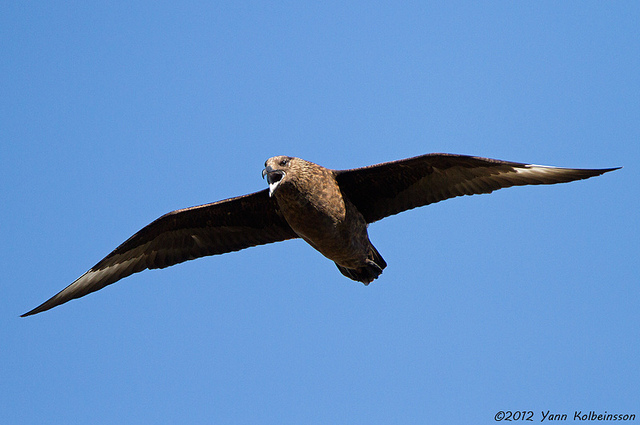
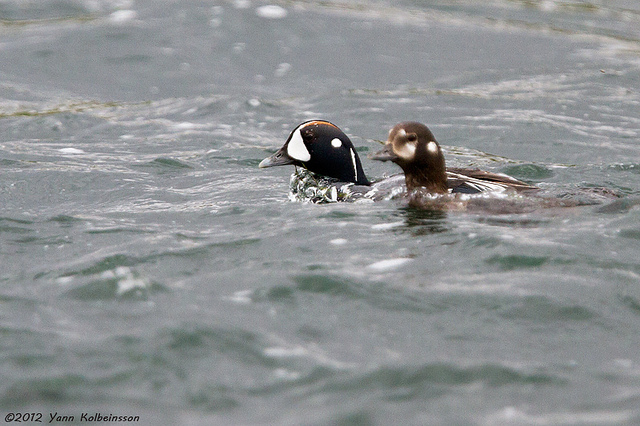

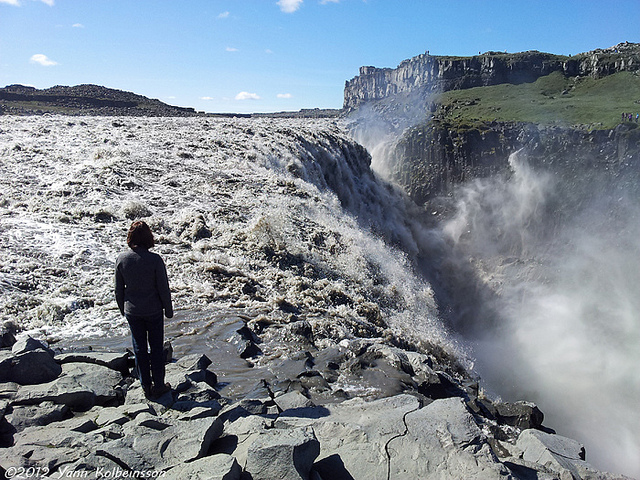
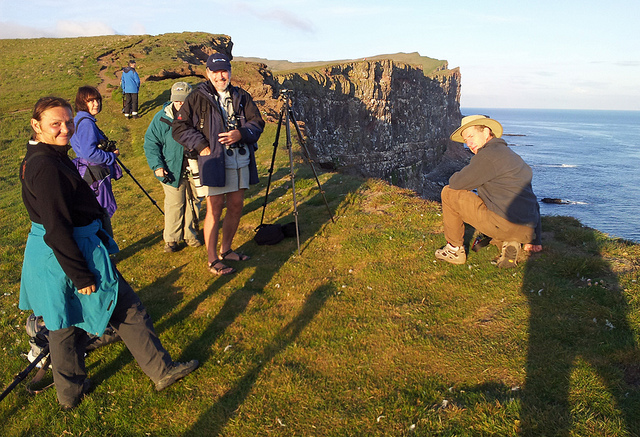
July 9: Steve Howell on his conclusion to Ecuador's Napo Wildlife Center
An amazing tour to the Napo Wildlife Center. Our last two full days were spent along a wonderful forest trail (where miraculously the only rain was at lunchtime, below) and at the canopy tower (below), with a relaxing late afternoon canoe ride the last day - when a group of Giant River Otters (below) performed to perfection. Forest birds ranged from the vocally arresting Red-throated Caracara (great views of a pair calling) to an unobtrusive Dwarf Tyrant-Manakin sitting quietly in the subcanopy. And more than a dozen species of antbirds, including the very local Yasuní Antwren; an impressive mixed-species flock; and a troop of Wooly Monkeys. The canopy tower produced stunning views of Blue-and-yellow Macaws (below); ten species of raptors, including a pair of Plumbeous Kites (below) building their nest right in the canopy tower tree (!); an eye-level Black-and-white Hawk-Eagle being mobbed by a Bat Falcon (below); two groups of Red Howler Monkeys; a nice Blue-throated Piping Guan; and the "usual" toucans, parrots, oropendolas, and cotingas. After a siesta, with a group of endearing Golden-mantled Tamarins (below) by the cabins, we reluctantly took our last canoe ride around the lake, finding Sungrebe, a confiding White-eared Jacamar (below), Pygmy and Green-and-rufous Kingfishers, and of course the otters. After a good sleep, an early start got us out for great scope views of displaying Amazonian Umbrellabirds before heading back to Coca and our flight to the cool dry air of Quito. Now on to Northwest Ecuador and the Week in Paradise tour.
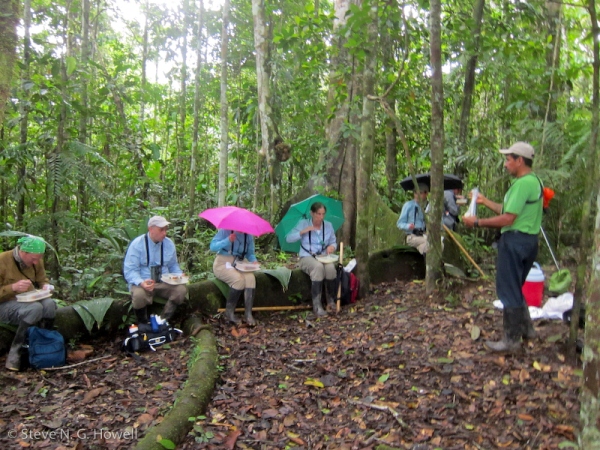
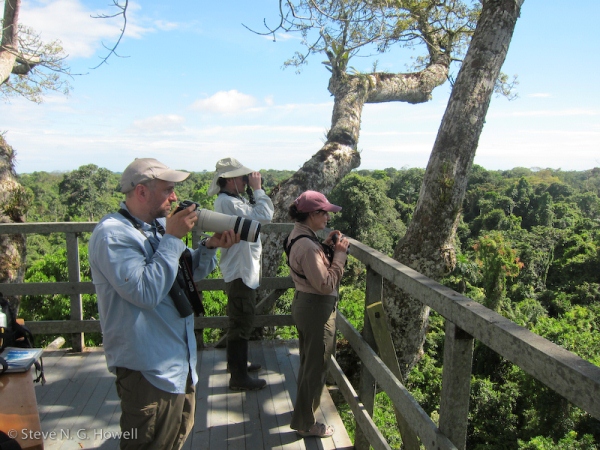
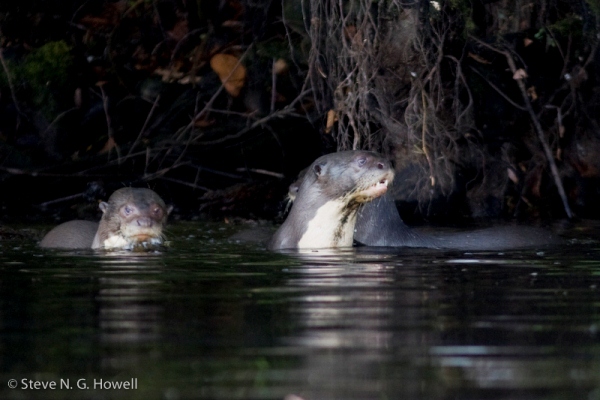
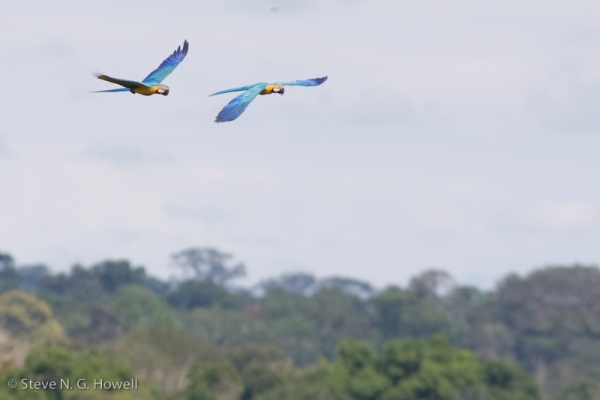
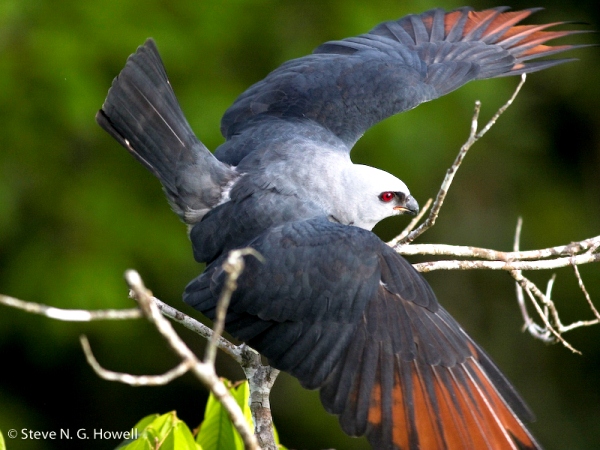
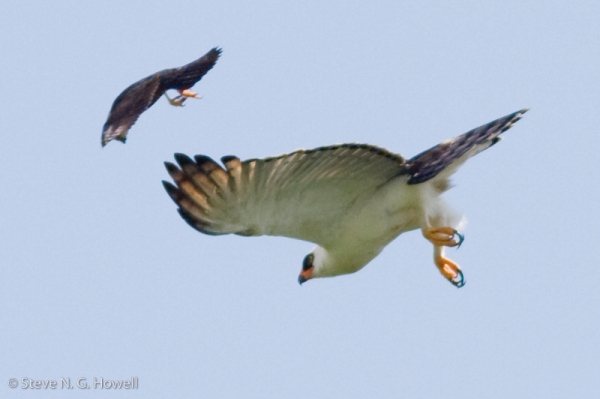
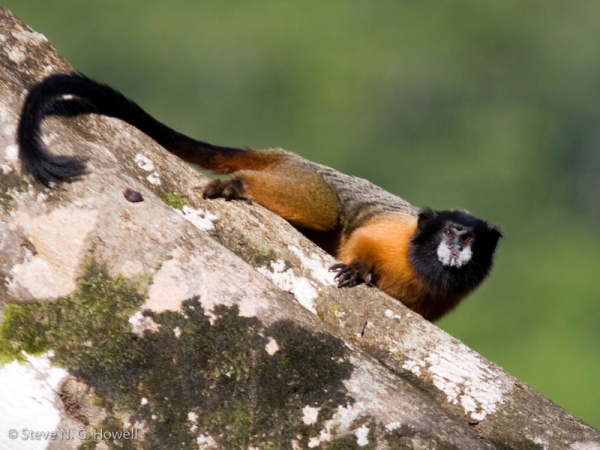
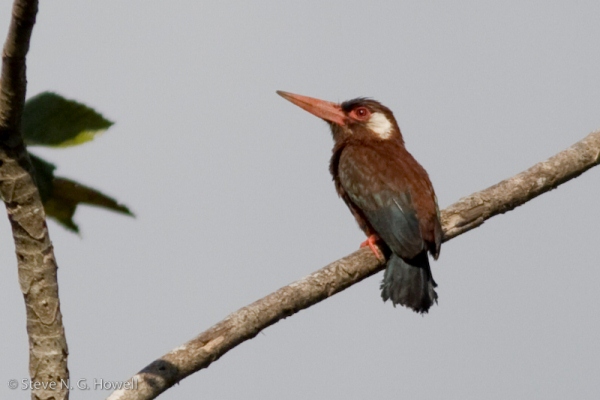
July 3: Steve Howell on his on-going tour to Ecuador's Napo Wildlife Center
The snow and sleet our first day up in the Andes at Papallacta Pass seem so long ago, since we arrived in the hot and humid lowlands. Was it only 4 days ago we were enjoying "cute" Grass Wrens singing feet away (clearly NOT the same species as Sedge Wren in North America!), handsome Pearled Treerunners (below) and swarms of highland hummingbirds? Our travel day was wonderfully smooth and we arrived in time to enjoy some birding at NWC, including a pair of stunning Lunulated Antbirds (not bad for the first antbird!), trogons, woodcreepers, jacamars, Hoatzins, and even a good view of the little-known White-chested Swift. Since then we've marveled at birds and mammals and other biota from a very comfortable home base (dawn yesterday, below). I'm writing this during siesta time and hoping I'm not missing much - during the last siesta some folks spotted Giant River Otters from their hammocks and others were visited outside their cabins by a troop of Golden-mantled Tamarins! The many, many highlights so far have included Scarlet Macaws (below) displacing a pair of Blue-and-yellow Macaws from their perch below the canopy tower, 6 species of monkeys (including adorable Noisy Night Monkeys, roosting below), a point-blank Spangled Cotinga (below) in the canopy tower tree, great views of Black-bellied Cuckoo (below), a fantastic group of Gray-winged Trumpters (below – check out the iridescent lilac chest spots! And what amazing sounds!), a baby Anaconda (“only” about 7 feet long; below), 20 species of antbirds, and Hoatzins and Black-capped Donacobius (below) on each canoe commute.
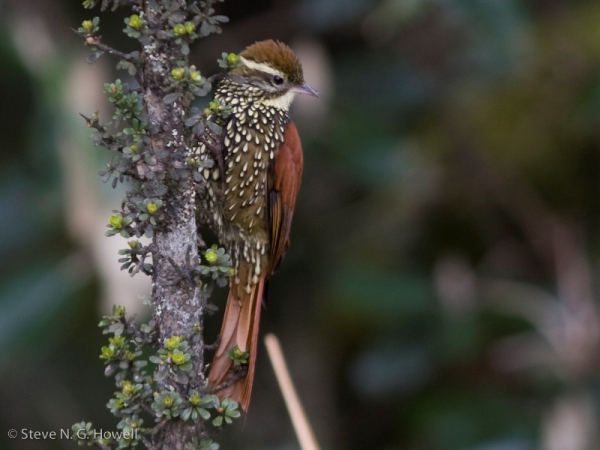
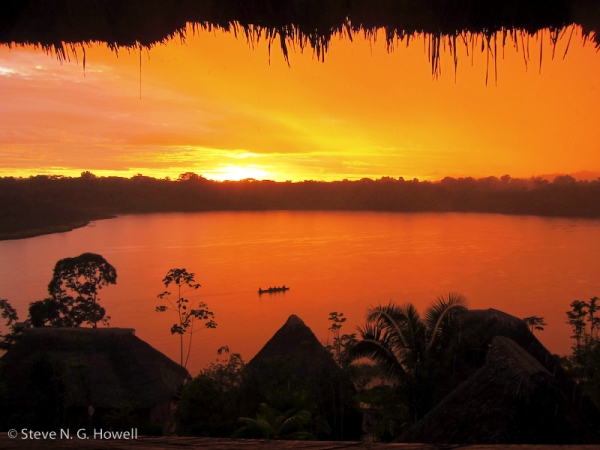
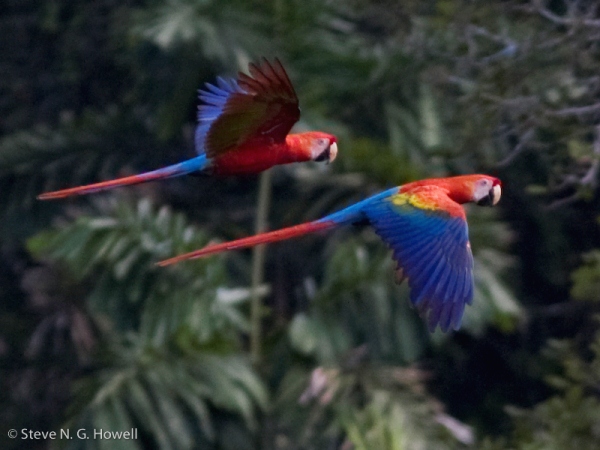
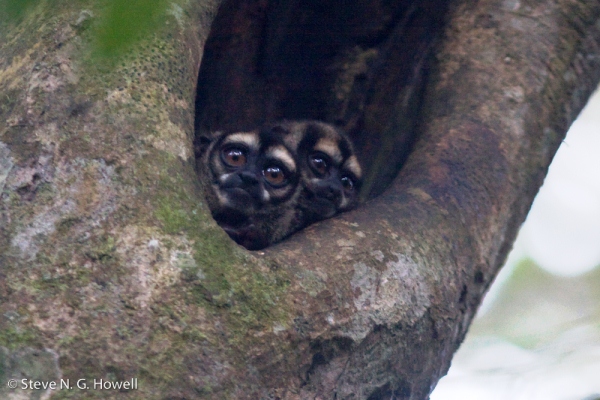
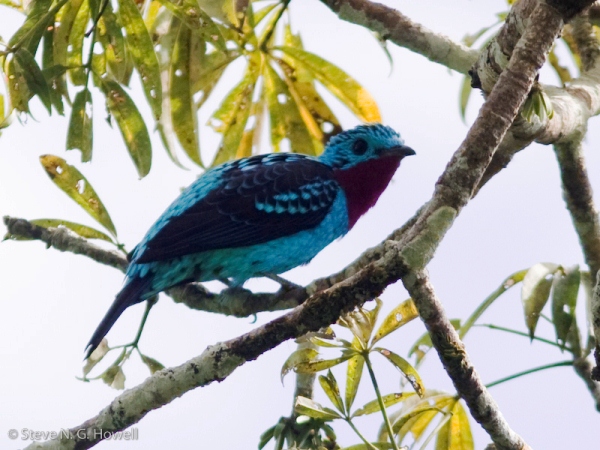
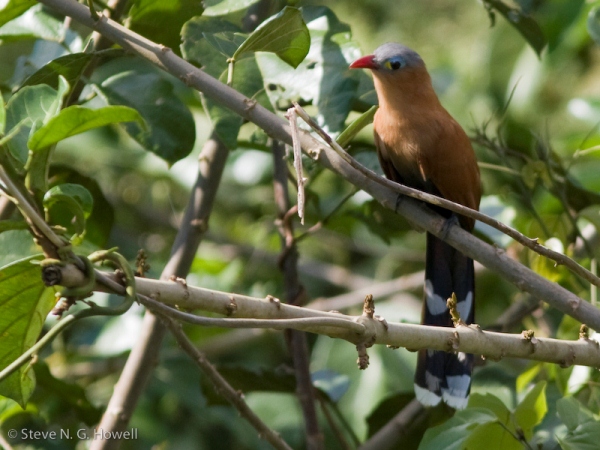
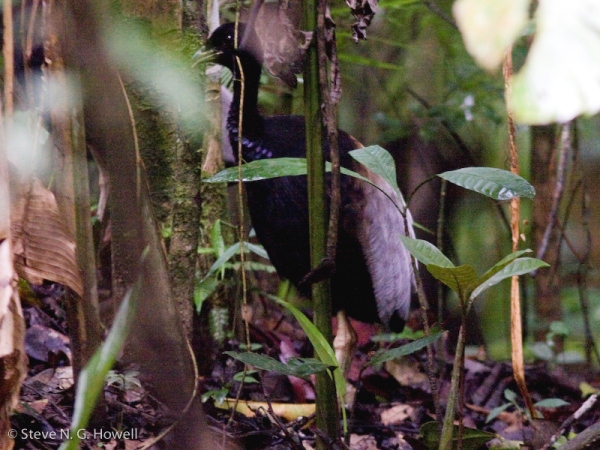
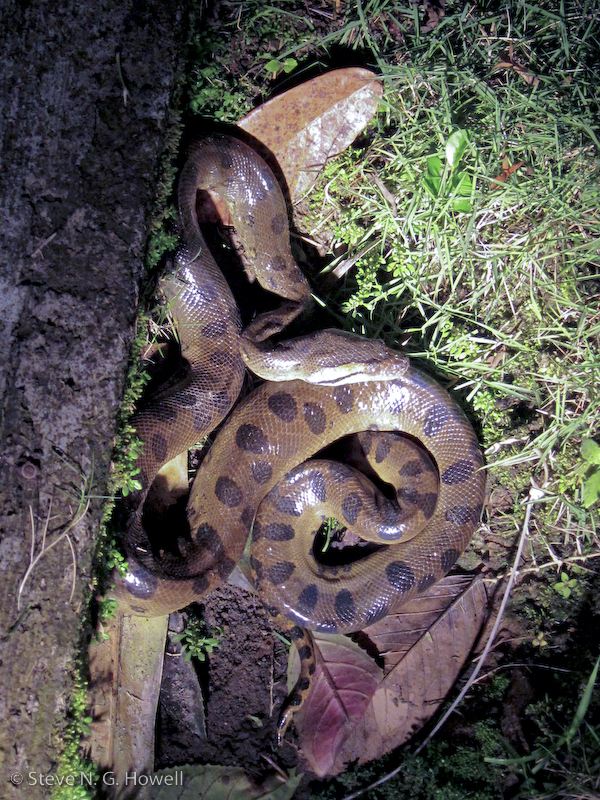
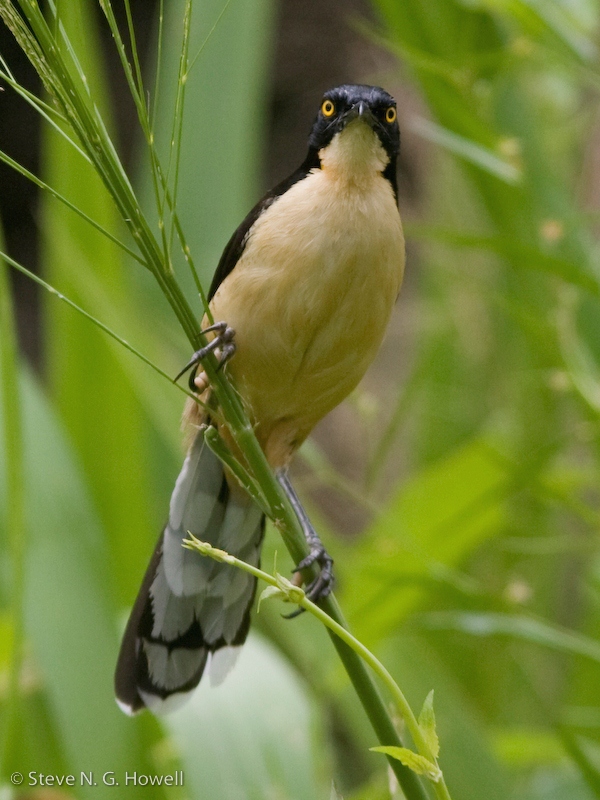
June 28: Gavin Bieber on his just-completed tour of Alaska
Our trip across the magnificent state of Alaska just wrapped up in spectacular fashion. More than most places in North America the birding often winds up playing second fiddle to a wide array of jaw-dropping scenery like Tern Lake north of Seward. The Nome portion of the trip gave us great views of all of the Seward Peninsula specialties, including a hyperactive and territorial Bluethroat. In Seward we had an amazing boat trip with Fin Whale and bubble-net feeding Humpbacks, as well as the very local Kittlitz's Murrelet. Barrow provided a perfect cap with a host of breeding shorebirds including a stunning male Ruff and an inqusitive Snowy Owl. We even encountered three very rare vagrants from further south in North America, with both Western and Eastern Kingbirds, and a Common Grackle through the mainland portion of the tour and Barrow. And how could I fail to mention the mammals (of which we recorded 26 species) with highlights being the 14 Grizzly Bears in Denali National Park and the Polar Bear in Barrow. Overall we tallied an impressive 184 species on this year's tour including the Pribilof and Barrow extensions. Images of Tern Lake, Bluethroat and Kittlitz's Murrelet, Ruff and Snowy Owl, and Grizzly and Polar Bears follow.

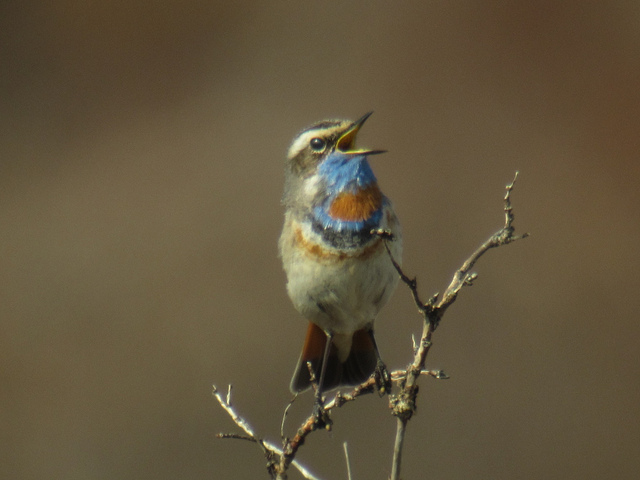
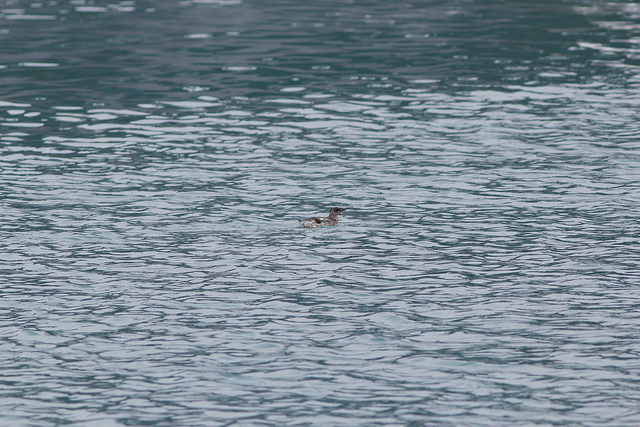
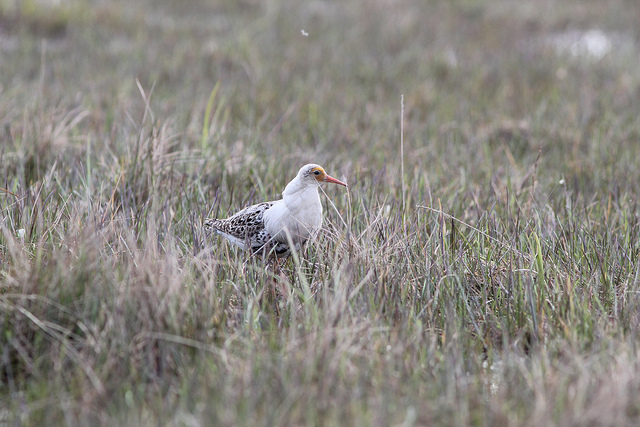
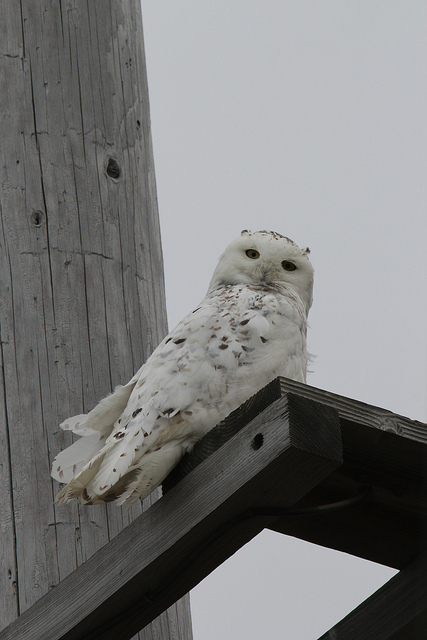
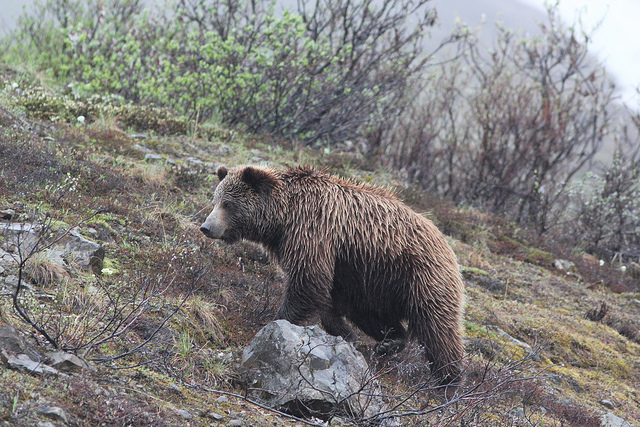

June 12: James Lidster on his just-concluded tour of Mongolia
Well I just don't know what to say about Mongolia, it's amazing! When seasoned birder and tour leader Dan Brown joined this year's trip, and described it as ''probably the best country he has ever been to'' then that gives an idea of how good it is! Not only is the country stunningly beautiful, where you really can find peace and solitude (read - often not see anyone apart from the group!), it also holds some fantastic birds. This years trip probably exceeded all others by not only getting all the hoped for species including Relict Gull, Pallas's Sandgrouse, Oriental Plover, Saxaul Sparrow, Wallcreeper, Mongolian Ground Jay (below), Kozlov's Accentor, Lammergeier, Azure Tit, Siberian Rubythroat, Altai Snowcock and both White-naped and Demoiselle Cranes (below).....we also found a Siberian Crane (below) and an Asian Dowitcher (well Dan found them but we all enjoyed them!). Our ground crew are simply one of the best teams I work with, and being driven across a bumpy desert is almost a pleasure, especially when you know that the chef will then knock up a 3 course meal for us at the end of the day, whilst sipping a surprsingly cool beer, or glass of red wine! That's my 7th tour to Mongolia in the books; can't wait for the next one...
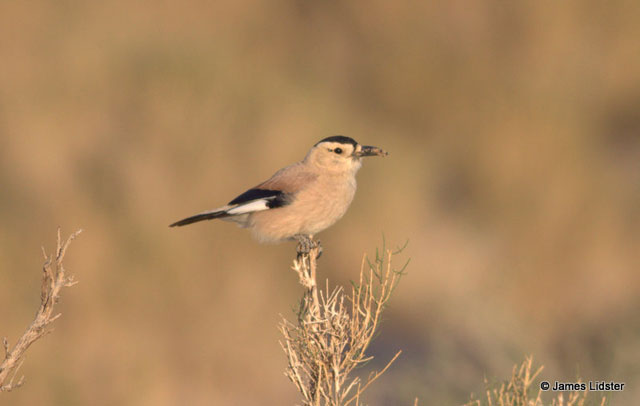
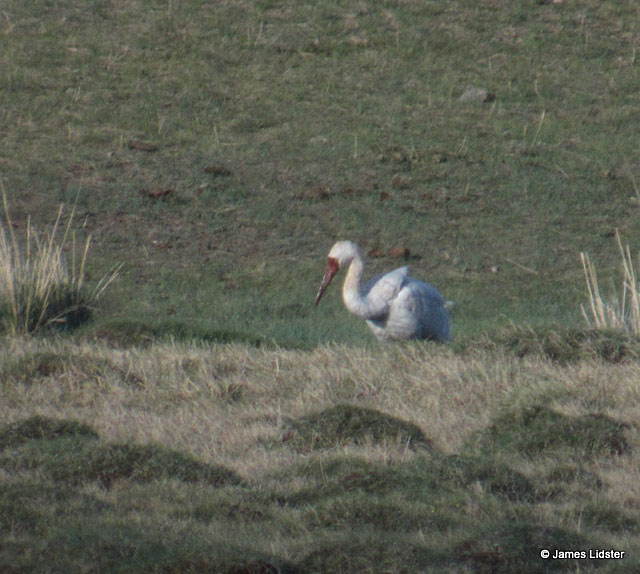
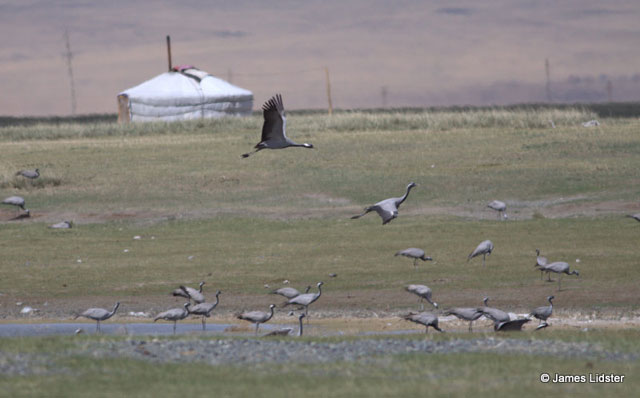
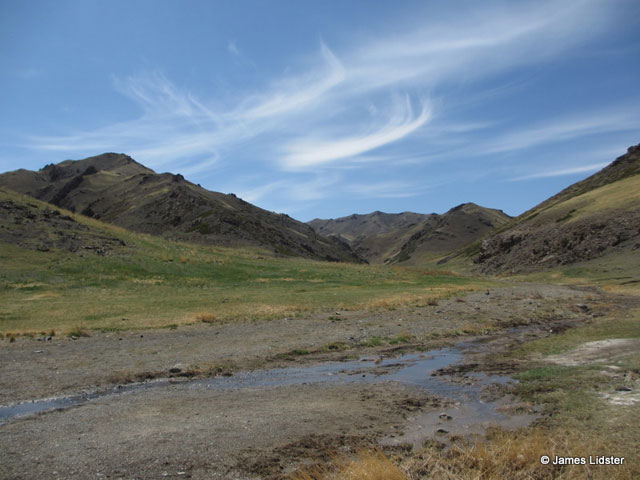

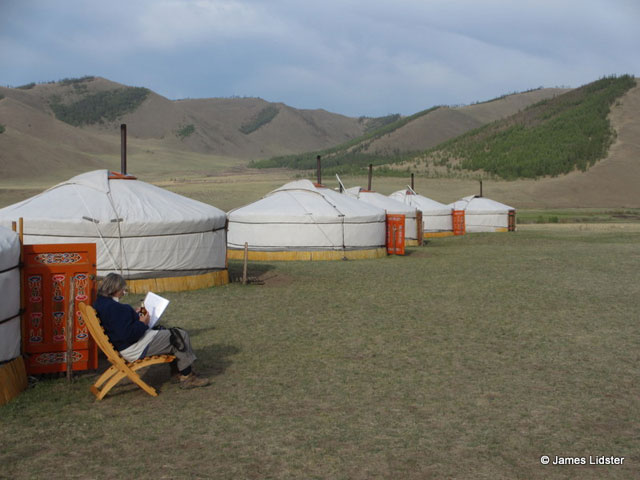
June 5: Paul Lehman on his and Jon Dunn's about to conclude Gambell, Alaska tour
Perhaps the best Gambell exit bird ever: this sub-adult White-tailed Eagle showed up and circled by the WINGS group as they waited at the 'airport' just 10 minutes before the plane arrived to whisk them away. Photo: P Schoenberger.
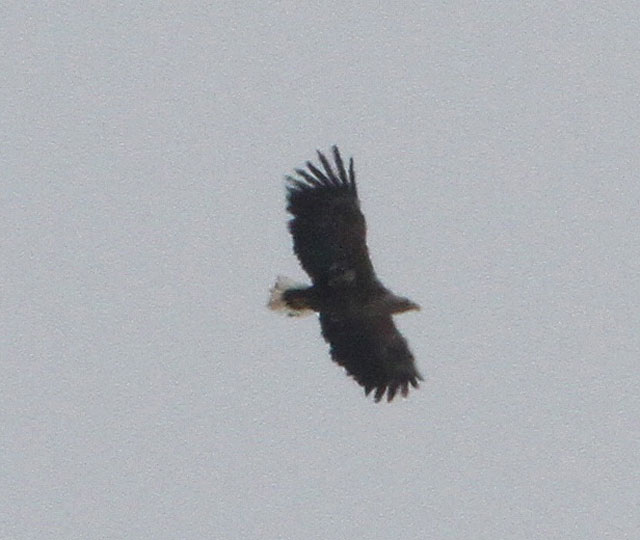
June 4: Paul Lehman on his and Jon Dunn's on-going tour to Gambell, Alaska
We arrived at Gambell on 28 May for a week-long
stay and within just three days had seen a fine male Brambling (below), two
Common Ringed Plovers, a Lesser Sand-Plover, and two Red-necked Stints.
Several Dovekies are in place on the mountainside, an adult Slaty-backed
Gull worked the beach, several pairs of White Wagtails cavorted about
the village, and small numbers of migrant Northern Wheatears and Eastern
Yellow Wagtails were seen. Seawatching has been very productive, with
daily or almost-daily sightings of small numbers of Spectacled and
Steller's Eiders, Yellow-billed Loons, Black Guillemots, and a few
Emperor Geese. Other species of interest include Rock Sandpiper,
Long-tailed Jaeger, Sabine's Gull, lots of "Vega" Herring Gulls,
thousands and thousands of alcids of nine species parading by the point,
"Eurasian" Green-winged Teal, and Hoary Redpoll. But actually the rarest
species found so far has been the lost Willow Ptarmigan (below), the first
record for Gambell, ever.
